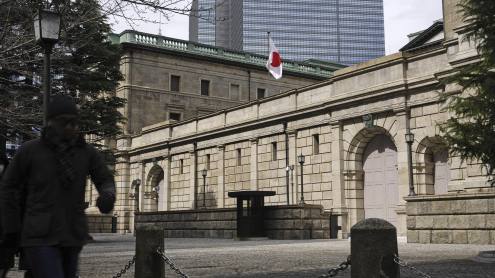Q State Bank of India [SBI] came 57th in this year’s Top 1000 World Banks and India’s second largest bank, ICICI Bank, came 150th. Why are the Indian banks so small compared with the Chinese banks, and when and how can they change?
A In recent years SBI has been seen as the best banking provider in many areas and this is why we have stood out. In answering your question as to why Indian banks are not bigger, it is important to note that public sector banks take up 71% of the banking space with the rest taken up by private banks and foreign banks, accounting for between 7% and 9%, respectively. This means the bulk of the banks are public sector banks and consolidation of the banks means consolidation of the public sector or public and private and there are issues there.
We and the government ,led by the prime minister and finance minister and the Reserve Bank of India, are in favour of consolidation but there are other stakeholders in the economy and the sector that are not. We at SBI have kicked off the consolidation experiment and the SBI Group is comprised of nine banks, including seven princely associate banks and, on August 13, the merger of State Bank of Saurashtra took place.
We are looking closely at the post-merger issues, viewing it as a merger experience, how to prioritise the issues surrounding the merger and in this sensitive issue we are being closely watched.
If all goes well then more banks will be merged and more mergers will take place but if not then there is likely to be a pause. But this is only part of the story; while the West slows, India might slow, but only to 7.5% growth this year, which is still good with India’s corporates doing well across the globe. Also there is a realisation that for India Inc to achieve, help is needed and there is a need for foreign banks, and therefore for consolidation and expansion to take place in the banking industry more overall involvement has to take place.
Q How can Indian banks become bigger?
A India needs more intensity; remember China started 15 years before us and has an advantage. In India the private sector has played a leading role in many corporate areas but in banking in India the changes cannot take place unless the state takes control. By statute, the government has a 51% state in the public sector banks and in SBI the government has a 55% stake. So when these banks have to grow, these statutes become a limitation, a constraint. Currently there is a bill before parliament that intends to bring down the government’s ownership of SBI from 55% to 51%, but that all depends on parliament.
There is also talk, and only talk, that if it was difficult to reduce government ownership then the state could have majority voting rights even if it had less ownership shares. With a degree of back-door nationalisation occurring in banks around the world at present I can see this happening, but not immediately. Banking leaders will be looking at various possibilities. I see more taking place in terms of liberalisation and consolidation.
Q Do you have a target as to where you see State Bank of India in the future?
A Given SBI is in 57th place now, in five years’ time I would like to be in the top 20 and in two years’ time I would like to be in the top 50. But I cannot get to the top 20 without government support. If we can consolidate and raise capital and use it for acquisitions overseas then we can be in the top 20 in five years.
Q What is SBI’s strategy outside India and do you have any targets for growth outside India?
A The business outside India is growing faster than that inside. We are a natural first choice for Indians outside [the country] and we want to go there to satisfy that natural business. At present our business outside India is about 10% and in about five years we hope to double it to 20%. Our target is 20% in five years.
Q Remittances are particularly important to the Indian economy as well as to State Bank of India. What is your strategy on remittances for the years ahead?
A India is the largest recipient of remittances in the world, and State Bank of India gets 25% of these remittances at present. And as far as targets go, we want to increase our stake in remittances in the next five years from 25% to 50% and we cannot do this without technology. We have worked hard on our 16,000 branches and creating a centralised money transfer system that connects to all our branches.
Money can be transferred not only from London but also from the Middle East to our branches in a matter of minutes. With this technology and system, known as SBI Express, we want to expand to the banks we have relations with and also have relations with the Indian diaspora.
We would like to get banks such as Royal Bank of Scotland to use parts of our system and also build relationships with non-banks in key regions such as the Middle East, including Western Union, that can take advantage of our extensive network inside India. Western Union, for example, has an unbeatable network outside India and with our network inside India we are an unbeatable combination.
We want to build relationships on a wide range of fronts globally, including our merchant banking arm. We have no plan to extend investment banking relationships on a global basis but we do not shy away from relationships either; we are looking for natural fits in our partners but we can be seen to be picky.
Q In terms of Asia, how do you see the bank’s expansion there and what areas do you view as particular targets?
A We are aware of a number of opportunities and in terms of strategic acquisitions we are keeping ourselves conversant with them. Recently, focusing on Asia, we launched a retail bank in Singapore. Right now we have two branches in Singapore but we will scale it up to 25 branches. While some banks are in decline globally at present we are taking a contrary position and are expanding in Singapore, where we believe we have a good mix of retail and wholesale.
We have designed some new products for retail in Singapore and if our experience with these products is good and we can integrate them with a back-end in India, then this could provide a cost-efficient new model that we can use elsewhere in the world. This new model, if it works, could be applied in markets such as Indonesia, so it is an interesting way forward.
Moving further west, we have set up a branch in the Dubai International Financial Centre and a branch in Dubai itself and we are keen on partnerships in the Gulf but it is a difficult area to enter.











